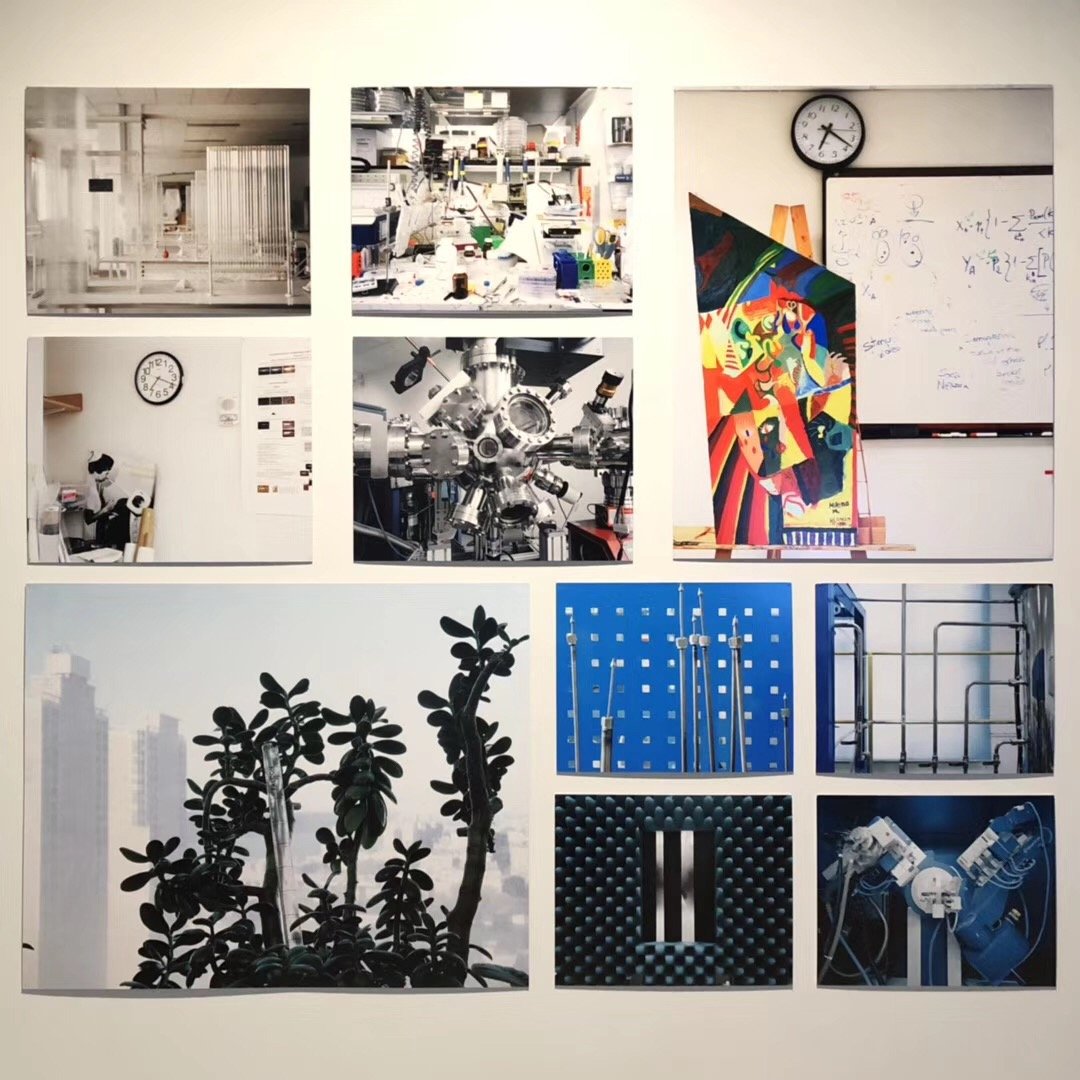Quasi-Nature:Bio Art,Borderline and laboratory
准自然—生物艺术、边界与实验室
Date: 2019.3.22-6.16
Location: Hyundai Motorstudio, Beijing, China
Curator: Jo WEI
Artists:Oron CATTS, Tal DANINO, Marta DEMENEZES, Eduardo KAC, Peiying LIN, LIU Wa, LIU Zhangbolong, REN Ri, Devon WARD, Vivian XU, Robert ZHAO Renhui
日期:2019年3月22日-6月16日
机构:现代汽车文化中心,北京,中国
策展人:魏颖
艺术家:奥伦·凯茨、塔尔·丹尼诺、玛尔塔·德·梅内泽斯、爱德华多·卡茨、林沛莹、刘娃、刘张铂泷、任日、戴文·沃德、徐维静、赵仁辉
Curatorial Text | 展览文字
Bruno Latour’s description of the quasi-object led to a wave of thought attempting to break the dualism of subject and object, as well as society and nature. The aim is to abandon anthropocentrism, cross the boundaries between species, and view humans as equal to other creatures. In line with this philosophy, the Bio Art movement explores how to break free of the confines of life, species, nature, and art.
The first part of this exhibition is a systematic review of the important works that shaped the history of Bio Art, created by transforming the different levels of life: genes, cells, and embryonic tissue. The exhibits include Eduardo Kac’s famous fluorescent green transgenic GFP Bunny, Oron Catts’s semi-living sculpture from the Tissue Culture & Art(TC&A) Project, and Marta de Menezes’ butterflies with unnatural wing patterns. There will also be new pieces created by the above artists using lab-grown meat(with Devon Ward) and gene-editing techniques. The issues of bioethics and modifications of organisms, closely associated to all of
these works, will soon become issues that Chinese society will have to face head-on.
The second part of the exhibition will mainly showcase the younger generation’s diverse way of thinking. One of the works by Singaporean artist Robert Zhao Renhui presents creatures that had been intervened by humans, while the other, in a museum- like fashion, displays insects that live in synergy with humankind. Ren Ri from Beijing presentsYuansu II, a work co-created by a bee colony, random probability and the artist, which seems to forebode that the future of art may not be anthropocentric but hybridized. An example of such hybridization is a work by Vivian Xu from Shanghai, a work in which she utilized modern machinery to guide a silkworm to spontaneously create a new object, integrating cultural, technological, and biotechnological concepts into a comprehensive framework. Then there is Taiwanese artist Lin Peiying, who has explored a new relationship between
viruses and people, where a virus is no longer a parasite but an entity that can symbiotically live with humans. Liu Wa takes electroencephalographic (EEG) technology to show invisible, subjective human thinking in an objective, visual way, and Tal Danino’s keen observation skills have uncovered similarities between the microbial division process and the expansion of the universe.
The third part of the exhibition, Lab as the generator of a Surprises, marks the first ever project of labs with art residency. The three famous scientific institutes — namely CERN (the European Organization for Nuclear Research), TARA, and SETI (the Search for Extraterrestrial Intelligence Institute) will be presented. This project explores how labs that known for disenchantment are also open to re-enchanted and imaginative ideas.
This exhibition is focused on the issues of today’s rapid development of biotechnology and society. Can humans find a new way to coexist with nature?
Should there be more discussion over ancient philosophical classics, such as Zhuangzi’s On the Equality of Things or Spinoza’s monistic view that humans are just a part of nature, as mentioned in Ethics ? Perhaps this new way of coexisting will be based on the acceptance, where human beings rely on scientific power to create a new nature? Whatever the case, the boundary between human society and nature will eventually disappear, and the two combined will form a “quasi-nature” state of being.
拉图尔对于准客体(quasi-object) 的叙述,所引领的思潮意在打破主体与客体,社会与自然等诸多二元对立,出离人类中心主义,超越物种间的边界, 并将人类置于与万物等对之位。“生物艺术”运动与此理念十分契合,致力于探讨生命、物种、自然、艺术等概念之间边界的交融。
展览的第一部分系统回顾了生物艺术史上奠基性的经典作品,它们从构成生命的微观维度——基因、细胞和胚胎组织层面来改造生命本身,其中包括爱德华多• 卡茨殊为有名的绿色荧光蛋白兔、奥伦• 凯茨使用细胞培养出的半活体雕塑和经玛尔塔• 德• 梅内泽斯改造翅膀图案的蝴蝶。同期所展示上述艺术家的新作,将涉及人造肉和基因编辑技术,与之相关的生物伦理、物种改造等也将是中国社会要直面的问题。
第二部分着眼于年轻一代的艺术家们更为多元的思考方式。来自新加坡的赵仁辉,研究收集了被人类影响的几十种生物,另一件作品则将与人类共处一室的昆虫进行了博物学式的陈列;来自北京的任日,与蜂群以及随机概率一起创作出《元塑II》,预示未来创作主体将不限于人类而可能是混合(hybrid) 身份;来自上海的徐维静,关注蚕与现代机器逻辑的融合,将其编织在文化、技术、生物性的综合脉络之中;来自台湾的林沛莹,则探讨了病毒与人的新型关系,非寄宿的致病者而是共生的互利者。刘娃借助脑电波技术将思维这一抽象概念通过主客观的并置而再现;塔尔• 丹尼诺则敏锐地捕捉到了高倍显微镜下的微生物分裂与鸿蒙之初的宇宙大爆炸之间的相似本质。
刘张铂泷的摄影作品《实验室》引出了展览的第三部分:“实验室作为惊奇发生器”。作为该项目的首次呈现, 策展人将引介三个设置艺术家驻地的著名实验室:CERN(欧洲核子研究中心)、TARA(塔拉科考船)、SETI(外星智慧搜寻计划 ),来探讨作为“祛魅”的实验室如何能成为想象力回归及“还自然之魅”的场所?
由此,展览所关注的是人类如何在生物技术飞速发展的当下,找到与自然共处的新型方式:是重访古老的智慧, 回归如庄子的“齐物”,如斯宾诺莎在《伦理学》中提到的“人是自然的一部分” 这样的一元论;或是出现新的建构—— 接纳与科技共同创造出的“新自然”? 无论如何,在人类社会与自然之间的边界终会消失,人与自然的再次融合,即是“准自然”。
现代汽车文化中心官网:“准自然”将于3月22日亮相
媒体报道:“准自然”,开启2019中国生物艺术的元年(凤凰艺术)
媒体报道:'Bio art' show offers a walk on the wild side(China Daily)
Link of the exhibition
展览链接
PDF of guidebook
Artworks | 作品



















Photos of Scene | 现场







